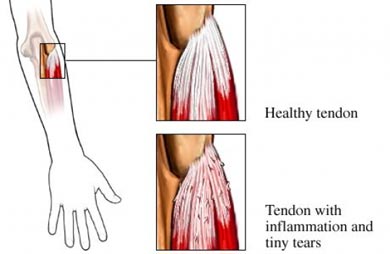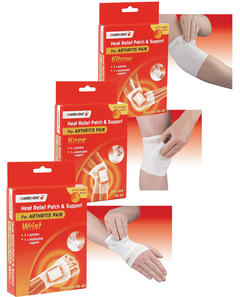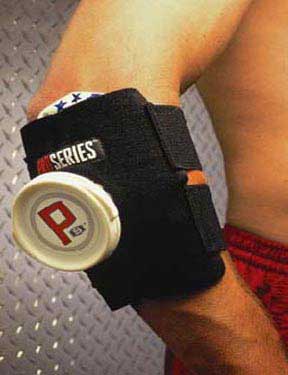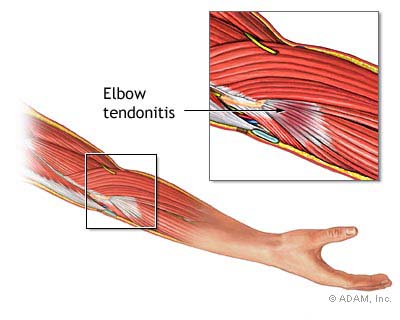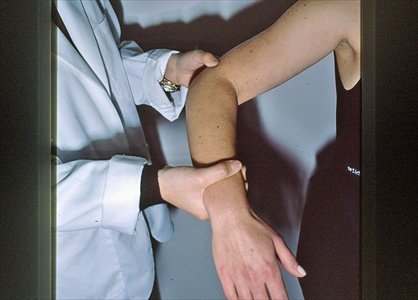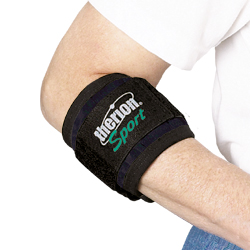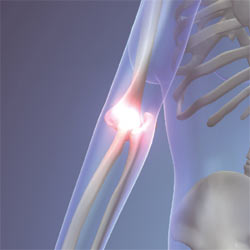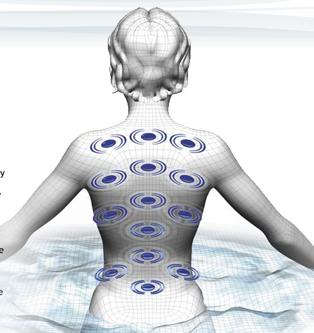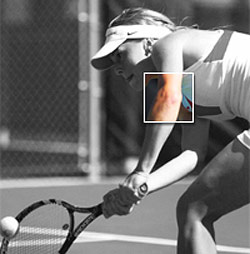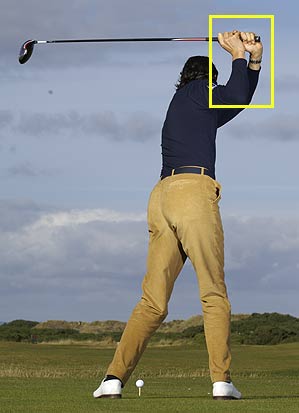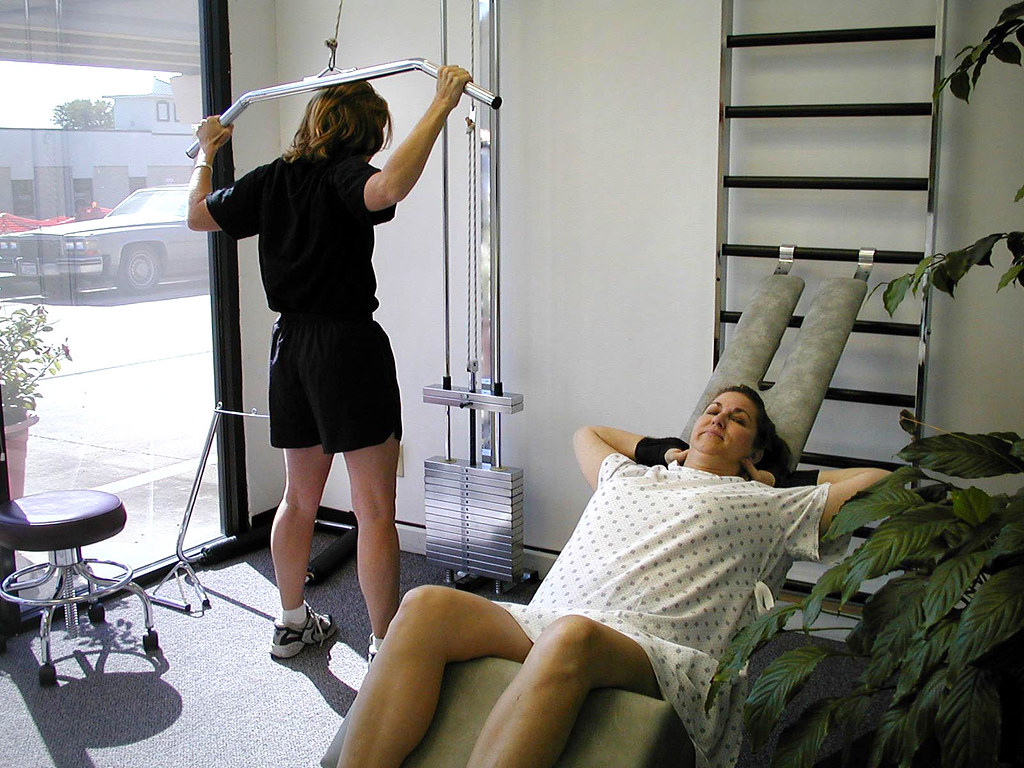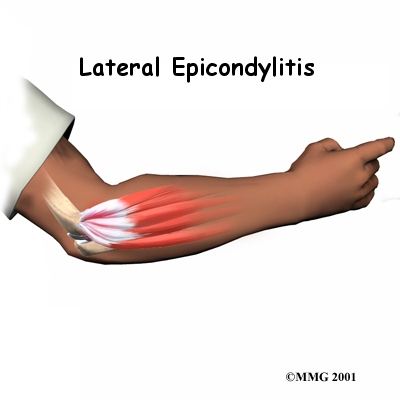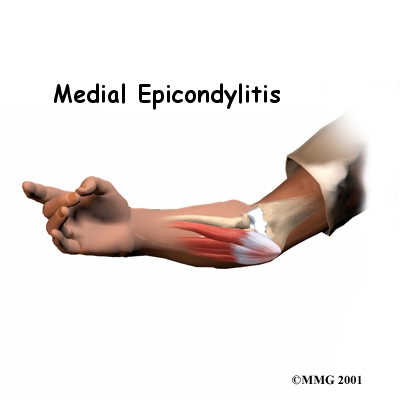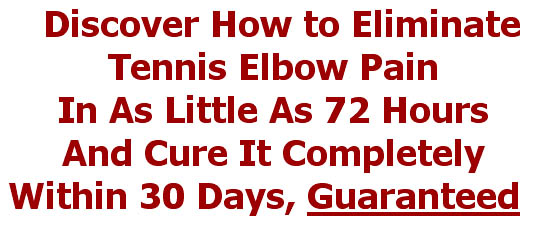The exact cause of lateral epicondylitis is not absolutely certain. Common theory is that that lateral epicondylitis, or tennis elbow in forearm is the result of consistent use or overuse of the limb. This condition presents with miniscule tearing of the tissues in the tendons that connect the muscles of the forearm to the joint at the elbow. Wrist extensors, a group of muscles, are the muscles involved when you have lateral epicondylitis. This group of muscles functions to move or lift the wrist. If you can not cock your wrist back – the pain may be related to tennis elbow.
Believe it or not, tennis elbow pain in forearm is the most likely diagnosis a patient will receive if he or she is complaining of elbow pain. In technical terms, the extensor carpi radis brevis is the most likely suspect in the causation of the symptoms of lateral epicondylitis. The symptoms of tennis elbow are as follows: pain that occurs when lifting objects, pain over the outside of the elbow, pain that seems to radiate from the wrist and down the forearm.
There are specific muscle groups that become damaged and involved in this type of injury as well as specific treatments that will help someone heal completely for his or her tennis elbow pain in forearm. Therefore, any injury many be saddening and concerning to someone who has developed it – but the good news is that tennis elbow pain in forearm is treatable.
It is believed that tennis elbow pain in forearm is a gradually developing condition. The pain is not immediately recognizable. It is, on the other hand, a progressive phenomenon. When his or her pain becomes too unbearable is when most people will finally have their tennis elbow pain in forearm checked out. However, as with virtually all medical conditions in existence, the sooner you know it is there the better (and more effectively) your treatment will help heal you and prevent further damage.
Most often, workers such as manual laborers and sports playing enthusiasts will suffer from. Most consistently lateral epicondylitis is the definitive diagnosis for manual labor workers such as plumbers, painters, gardeners, carpenters, from moving furniture, to computer repair and many more occupations. These individuals usually visit their doctors once they are finally exhibiting the more severe symptoms of lateral epicondylitis mentioned above.
Tennis elbow pain in forearm (lateral epicondylitis) is not just an inflammation of tendons around the joint, the condition is degenerative. A degenerative process such as this is believed to be the result of aging or the repetitive use of these particular muscle groups. If you have lateral epicondylitis and receive x-rays, the results will come back normal. Sometimes your doctor will request an EMG just to be certain that the diagnosis is definitive. The symptoms may be the result of an incomplete healing response in your body. When an affected area of the arm does not have enough blood flow it does not receive the nutrients (especially oxygen) degeneration of the tendons begins, causing small and painful tears.
Let your doctor know if you notice anything unusual such as significant swelling, bruising and pain in the joint, wrist or arm. If you have trouble carrying heavy objects without hurting your arm, or elbow pain that occurs at night or when you are at rest and not even using the arm. As a matter of fact, it is recommended that you get your elbow checked out right away if you are at all concerned and your elbow pain continues for several days. There are other diseases with very similar symptoms as lateral epicondylitis such as arthritis, joint instability, and even conditions such as radial tunnel syndrome.
